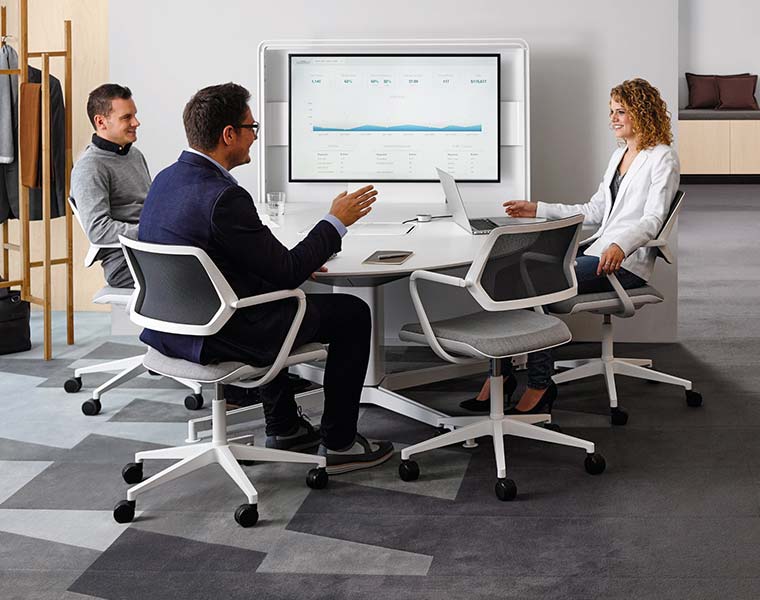As the retirement age continues to climb, workforces are becoming more and more diverse in age. This means businesses now need to evolve in order to make sure all staff feel valued and able to do their jobs.
In fact, research released by global professional service company, KPMG predicts that the UK workforce is expected to be made up of four generations (for the first time ever) by 2020.
Who are they?
The different workplace generations
Baby Boomers:
This encompasses those born between 1946 and 1964 and make up the portion of the workforce still in employment due to the extended retirement age.
Baby Boomers are born from the ‘Traditionalist’ generation so are typically independent, goal-orientated and accustomed to professional competition.
Office features Baby Boomers tend to prefer:
- Dedicated desks and assigned workspaces
- Space for privacy and individual focus
- Meeting rooms which don’t rely on technology for function
Gen X:
Generally those born between 1965 and 1978 who started their careers pre-internet.
They tend to be working beneath seniors from the Baby Boomers but also closely with the new generations of Millennials and Gen Z. This means they are comfortable with tradition but also appreciative of modern concepts such as agile working, ABW and environmental motives within the workplace.
Gen Y (Millennials):
This generation is widely considered to be those who are between the ages of 18-35 today (2019).
They are renowned for being a generation of professionals who are about collaboration, creativity, nomadic working and open spaces with lots of light and plenty of provision for fun and personal wellbeing.
Common office features millennials look out for:
- Biophilic design and natural elements indoors
- Collaborative work settings and technology
- Technology-integrated furniture
- Ergonomic office furniture
- Social spaces and a place to rejuvenate (take a break)
Click for more on what millennials look for in an office.
Gen Z:
Generation Z is the youngest of the professional generations and comprises those born between 1995 and 2015.
This is a generation that has never known a world without technology, internet and constant digital connectivity so they expect to be provided with this in the workplace.
Gen Zers want to break down the professional hierarchy, find job security and work in an environment which caters for their need to strike the perfect work-life balance.
This calls for design elements and initiatives such as:
- Flexible working hours
- Fun office design which encourages socialisation and casual collaboration
- A pet-friendly office policy
- Innovative technology to streamline idea-sharing and communication
- Choice and control over where, when and how they work
Office fit out and design for all generations
As the UK workforce becomes more diverse in age demographic – and therefore attitude, mobility and method – architects and interior designers now need to take a more blended approach to design.
Failing to create an inclusive workspace risks hindering productivity, motivation, communication and the attraction of top new talent as well we the retention of longstanding employees.
In order to create a working environment which caters to this ever-expanding age diversity, we recommend…
- Making technology accessible to all ages by implementing things like digital signage, SMART boards and ClickShare (pictured above) then providing training for older, less tech-savvy members of staff where necessary.
- Creating a diverse ecosystem of work settings including collaboration, breakout, touchdown as well as privacy and solutions to combat noise distraction such as acoustic office furniture and space division.
- Providing versatile furniture choices such as dedicated work stations as well as non-assigned hot desking clusters to facilitate both agile working and more traditional approaches to use of space.
- Considering office ergonomics such as height-adjustable desks, soft seating and intuitive task chairs to accommodate a spectrum of different physical abilities and mobility levels.

